Washing a large blanket in the washing machine
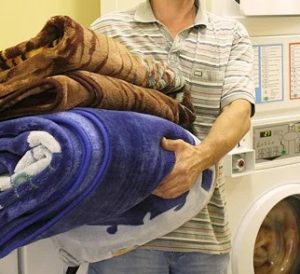 It’s nice to cover yourself with a large terry blanket, but washing it is even more fun. When wet, a bulky item becomes many times heavier, which somewhat complicates the cleaning process. But there are no unsolvable problems - you can refresh the bedspread either by hand or in the washing machine. All that remains is to figure out how to properly wash a large blanket in a washing machine and by hand. All the nuances and recommendations are given below.
It’s nice to cover yourself with a large terry blanket, but washing it is even more fun. When wet, a bulky item becomes many times heavier, which somewhat complicates the cleaning process. But there are no unsolvable problems - you can refresh the bedspread either by hand or in the washing machine. All that remains is to figure out how to properly wash a large blanket in a washing machine and by hand. All the nuances and recommendations are given below.
What is the blanket made of?
Nowadays a soft blanket on a sofa or bed is an integral part of the interior. It decorates the room, warms and protects furniture and bedding from dust and dirt. Moreover, the modern market offers many colors, sizes, styles - everyone chooses a bedspread to their taste.
As a rule, blankets are distinguished by the material they are made from. The most commonly purchased blankets are wool, cashmere, fleece, fur and plush blankets. Each fabric has its own advantages, disadvantages and cleaning conditions.
- Wool. There are blankets made from natural and synthetic fibers with short or long pile. They are inexpensive, warm well and easy to care for.
- Cashmere. Blankets made from high-quality mountain goat underfur are more expensive than regular wool ones, as they are more smooth and soft. There is also a “minus” - cashmere products require especially careful care.
- Fleece. Blankets made from this synthetic knitwear, despite their lightness, retain heat well and “breathe”. Another advantage is low cost and variety of shades.
- Artificial fur. These bedspreads are shaggy, soft and inexpensive. An assortment of colors from the usual beige tones to acidic shades and imitation animal skin.
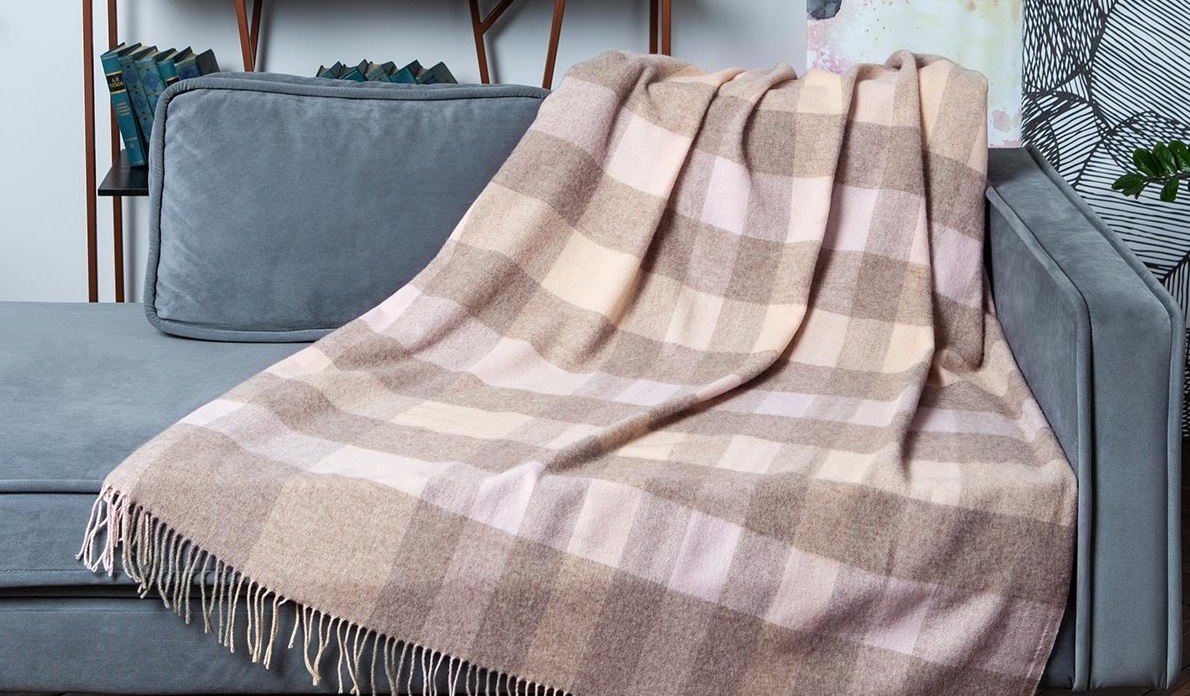
- Plush.It features a thick short pile and a cotton base, making it very soft, warm and practical.
Before washing a blanket, you need to study the label sewn to it - on it the manufacturer indicates the optimal conditions for cleaning the product!
The conditions for cleaning the blanket depend on the material of manufacture. It’s easiest with synthetics, since it can withstand both machine and hand washing at any degree and spin cycle. It’s easy to find out the type of fiber: just look at the manufacturer’s label of the product. Here the manufacturer will also indicate the optimal parameters for washing the bedspread.
If the label gets lost or worn over time, then you should adhere to the most gentle cleaning conditions: delicate mode, heating up to 40 degrees and minimal spin. The fact is that many woolen blankets, as well as products made from cashmere, fleece, plush and faux fur, cannot be wrung out in a machine - the fibers can be damaged and the pile can become crumpled. Bedspreads are dried only naturally without direct sunlight or heating devices.
Will it be possible to use the machine?
Most blankets can be washed in a washing machine, but under certain conditions. The first and most important thing is the ability of the machine to withstand the “final” weight of the product. If a blanket is easily folded when dry and placed in a drum, then when wet, the pile becomes many times heavier and exceeds the maximum capacity of the equipment. In the best case, the washing machine urgently stops the cycle, in the worst case, an imbalance occurs with all the consequences, including the “death” of the unit.
Before loading a blanket into the drum, compare the weight of the product and the maximum capacity of the washing machine.
In order not to bring the washing machine to an unpleasant position, it is necessary to estimate the weight of the blanket before loading it into the drum and compare it with the capacity of the machine. As a rule, a woolen double bedspread requires a tank designed for 10-12 kg, a single bedspread - at least 5-6 kg. You can also focus on the degree of fullness of the cylinder, since ideally the blanket should occupy no more than 2/3.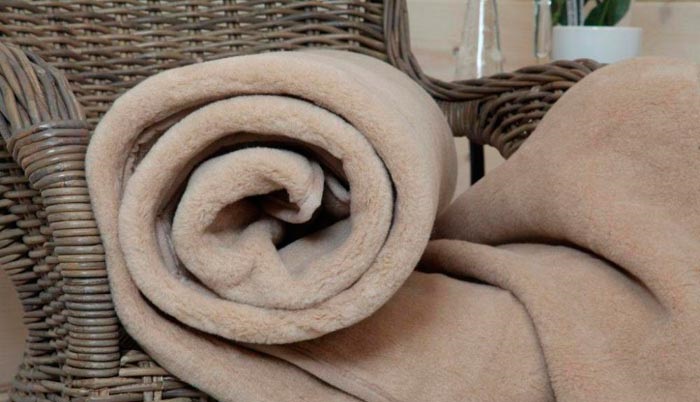
When washing in a machine, it is worth remembering a few more important nuances:
- before loading, the blanket is thoroughly shaken out and cleaned of hair, crumbs and pellets;
- the bedspread is washed separately from other things;
- strong stains can be removed before machine washing with special stain removers;
- instead of powder, liquid concentrates or delicate gels are used - they “work” better in cold water, dissolve faster and are washed out of the fibers without residue;
- the program is selected according to the type of fabric (“Wool”, “Synthetics” or “Fur”) or the most gentle one is set (“Delicate” or “Handmade”);
- spin is turned off or reduced to a minimum;
- maximum temperature – 40 degrees.
Fleece and plush blankets require special attention. It is better to wash them by hand, but you can also use a washing machine. In the latter case, the sequence will be like this:
- twist the fleece or plush into a sloppy “roll” and load it into the drum;
- add delicate gel to the main compartment of the powder receptacle;
- select the “Delicate” or “Manual” mode (with these programs the drum will practically not rotate, but only sway without damaging the tissue);
- turn off spin or reduce to minimum.
At the end of the cycle, the blanket is carefully removed and easily wrung out with your hands, pressing and stroking without twisting. Afterwards the product is hung out to dry.
If the blanket doesn't fit into the machine
It is not always possible to wash a blanket in a washing machine. For bulky woolen products, machines with a capacity of 5 kg or more are required, and for cleaning double bedspreads - from 10 kg. If the washing machine's drum is too small, then it is better not to risk it and freshen the blanket in the traditional way.
Before hand washing, the blanket is shaken out of dust and crumbs and inspected for heavy soiling. If there are stains, then it is necessary to treat them with a stain remover or laundry soap. Afterwards, you can begin comprehensive cleaning.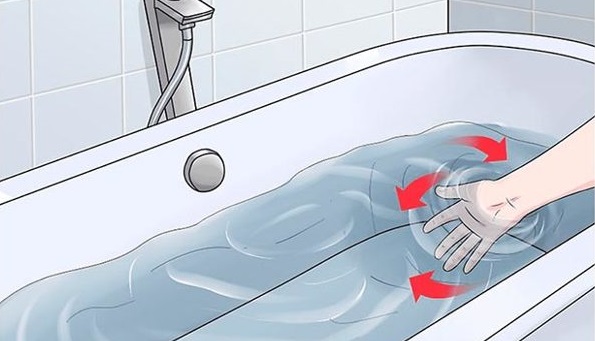
- Fill the bath with warm water (optimal temperature is 30-40 degrees).
- Foam the detergent in water (as when washing in a machine, we give preference to liquid formulations).
- Dip the blanket into the soapy solution, spreading it evenly throughout the bath.
- Leave the blanket to soak for 30-40 minutes.
- Then, with gentle movements, crush the fabric, squeezing dirt out of the fibers.
- If the water darkens, drain.
- Rinse with a shower head, turning and pressing the blanket until the flowing water becomes completely clear.
- Fill and drain the tub several times to completely rinse out the detergent.
- Drain the water from the bath and leave the blanket on the bottom for another 20-30 minutes until most of the moisture has drained from the fibers.
When cleaning by hand, the blanket is rinsed at least three times!
There is also a “rustic” method for cleaning a blanket, which is suitable for those who live in a private house. So, you need to hang the blanket on the fence in the yard, water it thoroughly with a hose, and then dilute a soap solution in a basin, soak a brush in it and wipe the stained areas separately. The blanket is then rinsed with a clean stream and left to dry.
If it is not possible to wash the blanket by hand or if you cannot remove stains from the fence when cleaning it in the bathtub, there are only two options left - go to the laundromat or dry cleaner.
Interesting:
Reader comments
- Share your opinion - leave a comment
Categories
Washing machine repair


For buyers

For users

Dishwasher



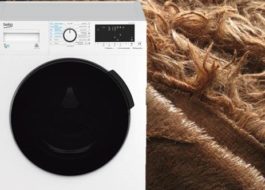
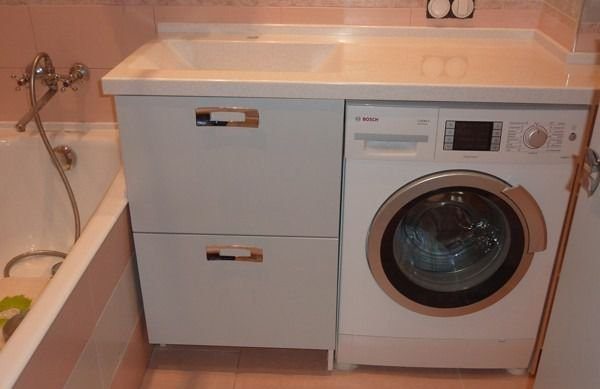












Add a comment